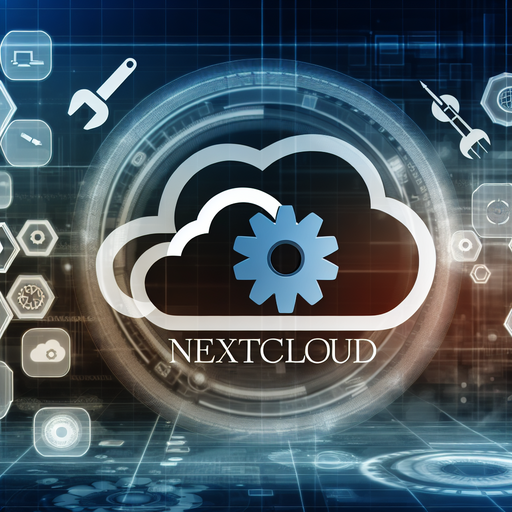Nextcloud and Dashboard Customization: Enhance Your Cloud Experience
Nextcloud is an open-source cloud platform that helps you store, manage, and share your files in a secure environment. It offers a variety of features that cater to both personal and professional needs. One of the compelling features of Nextcloud is the ability to customize the dashboard. In this article, we’ll delve into Nextcloud dashboard customization and explore how you can make the most of this feature.
What is Nextcloud?
Nextcloud is a versatile, open-source cloud storage solution that allows users to host their own cloud servers on-premises or on virtual private servers. With Nextcloud, you gain complete control over your data, including its storage, access, and management. This level of control differentiates Nextcloud from third-party cloud storage services such as Google Drive or Dropbox.
The Importance of the Nextcloud Dashboard
The Nextcloud dashboard is your command center for managing files, monitoring activities, and accessing various apps. A well-customized dashboard can significantly enhance your productivity by providing quick access to essential tools and information. By personalizing the Nextcloud dashboard, users can tailor their workspaces to fit unique workflows and preferences.
How to Customize the Nextcloud Dashboard
1. Adding and Managing Widgets
Widgets are dynamic elements that offer a quick snapshot of various activities and information on your Nextcloud instance. You can add widgets like calendar events, upcoming tasks, file activity, and more. To add widgets to your Nextcloud dashboard:
- Navigate to the dashboard by clicking on the ‚Dashboard‘ option in the left sidebar.
- Click on the ‚Add Widget‘ button.
- Select the widget you want to add from the list.
- Drag and drop the widget to the desired location on your dashboard.
2. Customizing Widget Layout
Nextcloud allows you to arrange your widgets in a way that makes the most sense for your workflow. You can drag and drop widgets to reorder them on your dashboard. Additionally, some widgets allow you to resize them by clicking and dragging the corners.
3. Using Nextcloud Apps for Enhanced Functionality
Nextcloud’s extensive app ecosystem is one of its most powerful features. By installing various apps, you can add new functionalities to your Nextcloud dashboard. For example, you can integrate email, contacts, calendars, and project management tools directly into your dashboard. To install and manage apps:
- Go to the ‚Settings‘ menu in the top-right corner of the dashboard.
- Select ‚Apps‘ from the dropdown menu.
- Browse the available apps and click ‚Enable‘ to add them to your Nextcloud instance.
4. Custom Backgrounds and Themes
Visual customization is another way to make your Nextcloud dashboard feel more personal. You can change background images and apply themes that match your style. To change the background:
- Click on your user avatar in the top-right corner.
- Select ‚Settings‘ from the dropdown menu.
- Navigate to ‚Personal Info‘ and scroll down to ‚Background.‘
- Upload a new image or select a pre-existing one.
5. Setting Up Default Dashboard Views
The default dashboard view is what you see every time you log in to Nextcloud. You can customize this view to focus on the most critical information. To set up default views:
- Arrange your widgets in the desired order.
- Click on the ‚Save Dashboard‘ option to retain this setup as your default view.
Benefits of Customizing Your Nextcloud Dashboard
Personalizing your Nextcloud dashboard offers various advantages:
- Enhanced Productivity: Quick access to essential information and tools can boost your efficiency.
- Better Organization: Custom layouts help you stay organized by putting critical elements at your fingertips.
- Personal Touch: Tailoring your workspace makes it more comfortable and enjoyable to use.
- Improved Focus: Removing unnecessary widgets and distractions helps you focus on what’s important.
Common Customization Scenarios for the Nextcloud Dashboard
1. Business Use Case
For business environments, the dashboard can act as a central hub for all team activities. Custom widgets can display:
- Shared files and recent changes.
- Project deadlines.
- Upcoming meetings and calendar events.
2. Personal Use Case
For personal users, the dashboard can help manage daily activities. Personalized widgets can include:
- To-do lists and reminders.
- Personal calendar events.
- Recent photos or media files.
3. Academic Use Case
For educators and students, the dashboard can organize educational materials. Useful widgets could include:
- Upcoming assignment deadlines.
- Lecture notes and recent uploads.
- Group project updates and file shares.
Advanced Customization Techniques for Nextcloud Dashboard
1. Custom Scripts and Automation
For tech-savvy users, integrating custom scripts and automation can add extra layers of functionality. Using Nextcloud’s API, you can create custom scripts to automate repetitive tasks such as:
- Scheduled data backups.
- Automated file organization.
2. Integration with External Tools
Nextcloud supports integration with various external tools, enhancing its capabilities. Integrate tools like:
- Email clients.
- Document editors.
- Project management software.
3. User Permissions and Roles
Managing user permissions is crucial for organizational setups. Customize dashboard views based on roles to ensure each team member has access to the tools they need without unnecessary clutter.
- Set permissions for dashboard customization.
- Create role-specific dashboard layouts.
Final Thoughts
Customizing your Nextcloud dashboard allows you to create a workspace tailored to your needs, enhancing your overall cloud experience. Whether you’re using Nextcloud for business, personal use, or academic purposes, the ability to customize your dashboard ensures that you have the tools and information you need right at your fingertips.
By leveraging the extensive app ecosystem and advanced customization techniques, you can create a highly efficient and organized workspace. The effort you put into customizing your Nextcloud dashboard will pay off in the form of increased productivity and a more streamlined workflow.
